Swelling After Hair Transplant: Prevention and Treatment

Swelling after hair transplant is a common occurrence, which can affect the forehead and the eyes.
The resulting look might be shocking, but there is no need to worry. The oedema might cause discomfort; however, it is not dangerous to the health and would disappear on its own in a couple of days.
In this post, we will take a look at what causes the swelling after FUE hair transplant and what steps you can take to reduce the most common side effects.
Hair transplant face swelling symptoms
You will most likely notice the first symptoms of swelling after a hair transplant around 2 to 3 days after the surgery. The swelling usually lasts around 3 or 4 days at most.
Symptoms of hair transplant swelling usually start 2 or 3 days after your procedure and last around 3 to 4 days.
Hair transplant swelling is usually concentrated around your eyelids and forehead. In rare cases, hair transplant swelling can be mild, and you may not even notice it at all.
However, many patients can suffer from severe effects in the first few days of the healing process. Researchers tend to categorize swelling severity into five distinct categories.
- Stage 0 — 0 swelling
- Stage 1 — minor swelling on the upper part of the forehead
- Stage 2 — forehead in the upper and lower parts
- Stage 3 — cheeks and eye
- Grade 4 — patients suffer from a black eye effect
When the swelling after a hair transplant reaches stage 3 or 4 patients often become unable to open their eyes, which can cause discomfort.
However, even in the most severe cases, hair transplant swelling is self-limiting and typically subsides without any outside intervention.
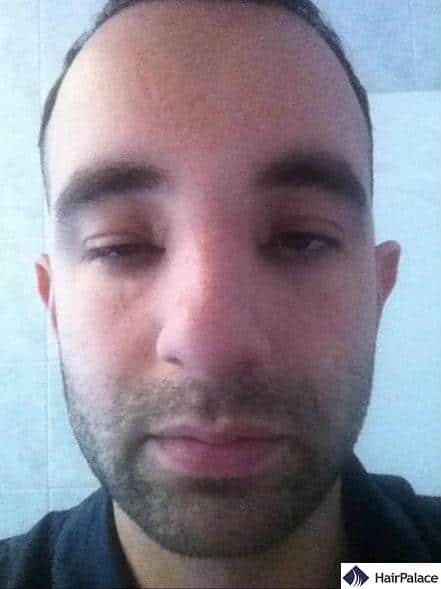
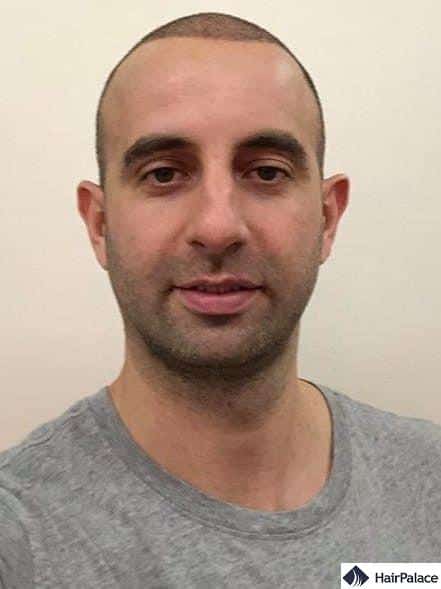
The founder of HairPalace hair clinic, Gábor Molnár, had Stage 3 swelling around his eyelids and forehead following his hair transplantation.
While this facial hair transplant swelling is unpleasant at first, his swelling quickly went down, leaving him with nothing but the perfect hairline he always dreamed of.
What causes the swelling after the hair transplant surgery?
The FUE2 Safe System method is a non-invasive surgical procedure. As such, general anaesthesia or sedation is not required, the surgeons administer local anaesthesia during the procedure.
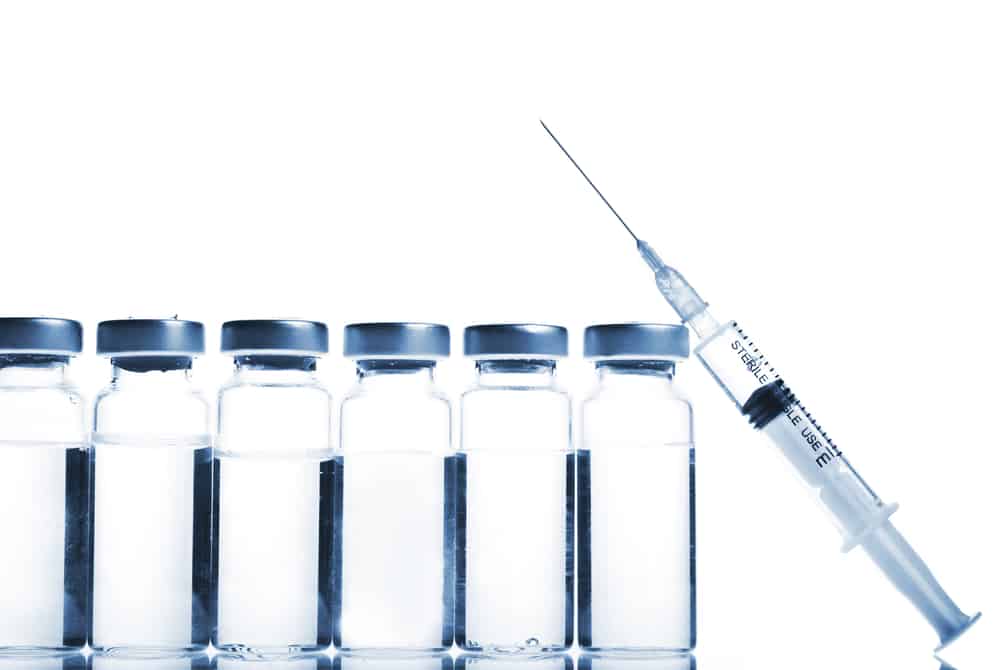
We work with Lidocaine- Adrenaline injections -in this combination the effects of lidocaine last longer, and it also allows the administration of larger doses.
At the start of the surgery, injections are given into the donor area at the back and of the head.
The surgeon’s pain test carefully and make sure that the area is numb before they start the actual harvesting phase.
The afternoon starts with the lidocaine injections again to numb the intended recipient area before the implantation.
Depending on the sensitivity of the skin and number of the transplanted hairs a relatively large amount of lidocaine might be necessary to carry out the surgery in a pain-free way.
As the local anaesthetic is injected under the skin, it will start travelling down due to gravity. This results in FUE hair transplant swelling that can be bothersome if it affects the forehead or the face.
What are the risks of hair transplant swelling?
Swelling after hair transplant surgery is rarely dangerous. The oedema after hair transplant tends to clear up on its own just a few days after the procedure.
However, there are certain cases where swelling may cause issues.
In case of heavy swelling around the eyelids, patients may become unable to open their eyes, this can severely limit their ability to work or perform everyday tasks such as driving or even cooking.
The easiest solution is to simply avoid such activities until the swelling subsides.
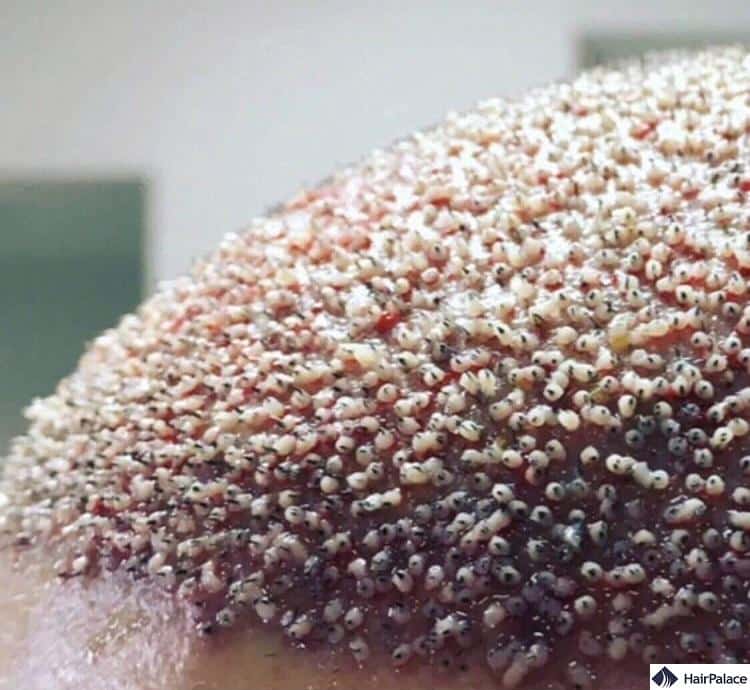
If the swelling persists for several days, it might be an early sign of an infected hair transplant. Especially if the swelling is accompanied by pain, itchiness or pus.
You should contact your hair transplant clinic immediately if post-operative oedema lasts longer than 1-2 weeks.
However, the biggest concern is if the swelling happens immediately after the surgeon administers the anaesthetic to your scalp.
This indicates anaphylaxis which is a very rare, but often life-threatening allergic reaction which needs immediate medical attention.
Most reputable clinics will be equipped to deal with this and have their staff trained to handle such situations.
How to prevent swelling after hair transplant
The swelling might occur 2-3 days after the hair transplant surgery and takes a couple of days to disappear.
It can be troubling if the recipient area is at the front of the scalp as the lidocaine will try to flow downwards under the skin.
It swells up the forehead first, then the eye area – blocking sight in some cases – and finally the lower parts of the face.
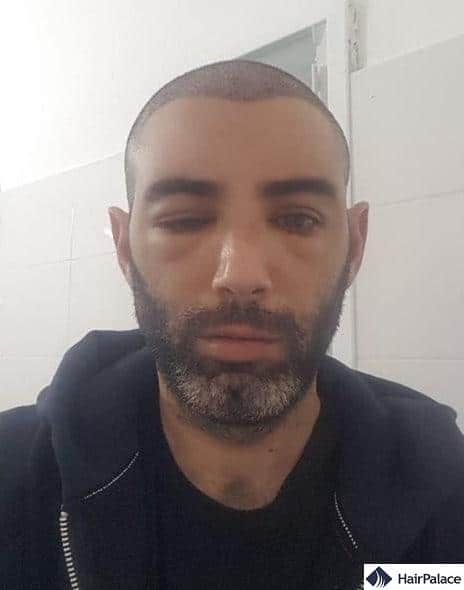
If there is no contraindication, the doctor may recommend a low-dose steroid tablet to prevent swelling.
For 3-4 days after the surgery, it is also necessary to massage the forehead frequently. We recommend using a light cream or moisturizer to avoid tugging on delicate facial skin.
This way the lidocaine can be pushed to the sides reducing the oedema, and the swelling of the eyes can be prevented.
Below you may take a look at the effects of the steroids and the proper massage on the condition a few days after the surgery:
5 tips to reduce swelling after hair transplant
If swelling occurs after the surgery it is important to inform your surgeon.
In the meantime, with the following tips you can reduce the duration and the severity of the swelling:
- Continue with the massage:
It is best to use gentle sweeping motions from the middle of the forehead towards the sides to push away the liquid under the skin.
It is important not to tug the skin, and you must avoid touching the recipient area! - Hydration:
Drink lots of water – 2-3 litres per day – can reduce the time it takes for the swelling to disappear. The water helps to flush out the fluid from the lymphatic system quicker. - Wearing a headband
This can often prevent the fluid from travelling further down into the tissue around your eyes or cheeks. - Ice packs
An ice pack or a cold compress can encourage your blood vessels to narrow down, which typically reduces inflammation and helps you feel comfortable. You can also use frozen peas as an alternative solution in case you don’t have an ice pack. - Sleep in an elevated position
Sleeping at a 45-degree angle can promote the excess fluids to drain away and reduce swelling quicker.
Summary
The local anaesthetic used during the procedure can accumulate under the skin and may result in face swelling. This typically happens around 2-5 days after the surgery.
This oedema might cause discomfort especially if it affects the eye area. If there is no contraindication the surgeon might recommend a low-dose steroid tablet to prevent the formation of the periorbital oedema.
In addition, it is important to frequently massage the forehead for 3-4 days after the surgery, as the doctor instructs.
It is best to use careful motions and a dab of facial cream during the massage, avoiding the implanted hair grafts.
The swelling reduces and disappears in a few days on its own, but with continued massage and increased water intake, you can shorten its duration and reduce the discomfort it may cause.
Swelling After Hair Transplant FAQ
Swelling after a hair transplant typically lasts 2 to 5 days, but it can vary depending on the individual and the specifics of the procedure.
To avoid swelling after a hair transplant: elevate the head while sleeping, avoid bending over, apply cold compresses, and follow post-operative care instructions provided by the surgeon.
The best way to reduce the swelling is to stay hydrated, apply regular forehead massages, consider wearing a headband, apply ice packs and sleep in an elevated position.
Swelling after a hair transplant occurs due to the accumulation of lidocaine in the scalp which travels down to the face.
Last medically reviewed on May 27th, 2024
- Jimenez F, Alam M, Vogel JE, Avram M. Hair transplantation: Basic overview. J Am Acad Dermatol. 2021 Oct;85(4):803-814. doi: 10.1016/j.jaad.2021.03.124. Epub 2021 Apr 24. PMID: 33905785.https://pubmed.ncbi.nlm.nih.gov/33905785/
- Mysore V, Kumaresan M, Garg A, Dua A, Venkatram A, Dua K, Singh M, Madura C, Chandran R, Rajput RS, Sattur S, Singh S. Hair Transplant Practice Guidelines. J Cutan Aesthet Surg. 2021 Jul-Sep;14(3):265-284. doi: 10.4103/JCAS.JCAS_104_20. PMID: 34908769; PMCID: PMC8611706.https://pubmed.ncbi.nlm.nih.gov/34908769/
- Dua, Aman; Dua, Kapil1. Follicular Unit Extraction Hair Transplant. Journal of Cutaneous and Aesthetic Surgery 3(2):p 76-81, May–Aug 2010. | DOI: 10.4103/0974-2077.69015https://journals.lww.com/jcas/Fulltext/2010/03020/Follicular_Unit_Extraction_Hair_Transplant.3.aspx
- Nestor CC, Ng C, Sepulveda P, Irwin MG. Pharmacological and clinical implications of local anaesthetic mixtures: a narrative review. Anaesthesia. 2022 Mar;77(3):339-350. doi: 10.1111/anae.15641. Epub 2021 Dec 14. PMID: 34904711.https://pubmed.ncbi.nlm.nih.gov/34904711/


